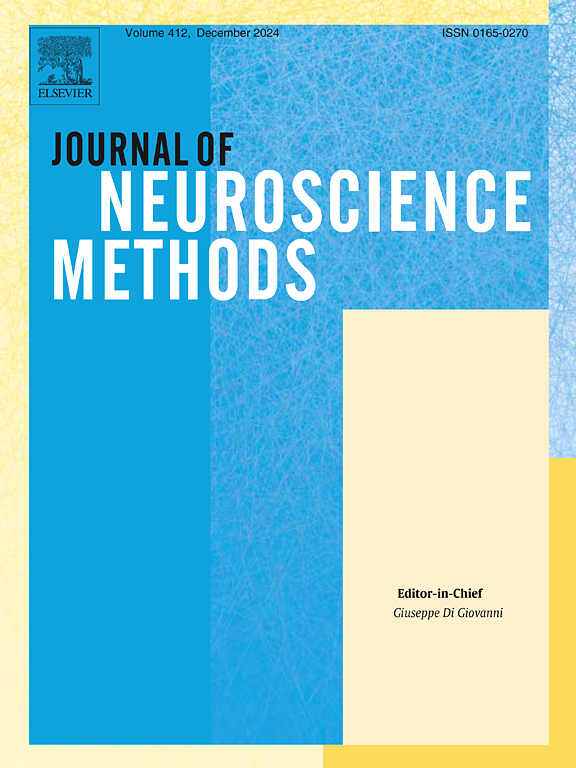Integrating neuroscience and artificial intelligence: EEG analysis using ensemble learning for diagnosis Alzheimer’s disease and frontotemporal dementia
IF 2.7
4区 医学
Q2 BIOCHEMICAL RESEARCH METHODS
引用次数: 0
Abstract
Background:
Alzheimer’s disease (AD) and frontotemporal dementia (FTD) are both progressive neurological disorders that affect the elderly. Distinguishing between individuals suffering from these two diseases in the early stages can be quite challenging, and due to their different treatments, it has become an important problem. Machine learning (ML) algorithms can be helpful in this matter due to their high ability to manage large data and deliver high-quality diagnostic results.
New method:
In this research, we integrate multiple ML algorithms into 10 ensemble learning techniques, utilizing 7 distinct features: 3 from the time domain and 4 from the frequency domain.
Results:
They are used to achieve a higher diagnostic accuracy level in binary and multiclass classification of samples from electroencephalography (EEG) signals of elderly patients with AD, FTD, and healthy age-matching controls (CN), during the eye resting state.
Comparison with existing methods:
The best results in carrying out binary AD/CN, FTD/CN, and AD/FTD classifications with significant accuracy95% have been obtained with the help of the light gradient boosting machine (LGBM) method applying the wavelet transform feature.
Conclusion:
This combination (LGBM&wavelet) also displays the best performance in the AD/FTD/CN multiclass classification process with accuracy93%.

整合神经科学和人工智能:脑电图分析使用集成学习诊断阿尔茨海默病和额颞叶痴呆。
背景:阿尔茨海默病(AD)和额颞叶痴呆(FTD)都是影响老年人的进行性神经系统疾病。在早期阶段区分患有这两种疾病的个体可能是相当具有挑战性的,由于他们的治疗方法不同,这已成为一个重要问题。机器学习(ML)算法可以在这个问题上有所帮助,因为它们具有管理大数据和提供高质量诊断结果的高能力。新方法:在本研究中,我们将多个ML算法集成到10个集成学习技术中,利用7个不同的特征:3个来自时域,4个来自频域。结果:对老年AD、FTD患者和健康年龄匹配对照(CN)患者在眼静息状态下的脑电图(EEG)信号样本进行二分类和多分类,可达到较高的诊断准确率。与现有方法的比较:利用小波变换特征的光梯度增强机(LGBM)方法对AD/CN、FTD/CN和AD/FTD进行二元分类的效果最好,准确率高达95%。结论:该组合(lgbm +小波)在AD/FTD/CN多类分类过程中也表现出最好的性能,准确率为bb0 ~ 93%。
本文章由计算机程序翻译,如有差异,请以英文原文为准。
求助全文
约1分钟内获得全文
求助全文
来源期刊

Journal of Neuroscience Methods
医学-神经科学
CiteScore
7.10
自引率
3.30%
发文量
226
审稿时长
52 days
期刊介绍:
The Journal of Neuroscience Methods publishes papers that describe new methods that are specifically for neuroscience research conducted in invertebrates, vertebrates or in man. Major methodological improvements or important refinements of established neuroscience methods are also considered for publication. The Journal''s Scope includes all aspects of contemporary neuroscience research, including anatomical, behavioural, biochemical, cellular, computational, molecular, invasive and non-invasive imaging, optogenetic, and physiological research investigations.
 求助内容:
求助内容: 应助结果提醒方式:
应助结果提醒方式:


